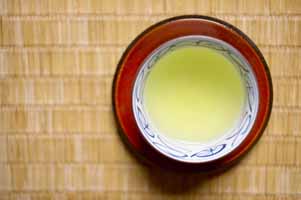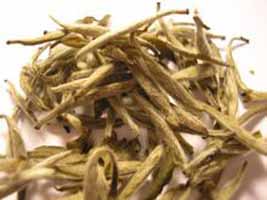 |
||||
White TeaThe Tea of RoyaltyWhite tea is the least processed and most delicate of the world's offerings. It is named after the white "hair" on the plant's newest buds. This type of tea is noted for its natural sweetness and very mild flavor. It is my favorite of all the teas. White-tea comes from the very youngest leaves and buds which have lower levels of caffeine than older leaves. The new leaves have not had the opportunity to "ferment". The longer the leaves are allowed to ferment or oxidize, the darker and stronger tea becomes. The opposite of white-tea is literally, black tea like you find in the Lipton blend. Authentic white-tea is the specialty of a limited geographical location in southeastern China's Fujian province. The most popular variety is called Da Bai which means Large White but there are several others. It really wasn't until the 1990's that white tea was imported widely to the Western world. It has the lowest caffeine level of the four tea types. According to studies, white-tea has more anti-bacterial and anti-viral properties than green tea and many antioxidants. Catechin levels are higher in white than green. Catechin or EGCG is the compound known for its antioxidant properties that all tea contains. In combination with other ingredients found in all teas, EGCG helps stimulate weight loss. The popularity of white-tea is growing as more and more people experience its unique character and flavor. Did I mention its my FAVORITE?

We know that white-tea was used in the Tang Dynasty (618-907 AD). In that time, tea leaves were processed into cakes of compressed leaves. The beverage was brewed by boiling pieces of the cake in earthenware tea pots. The Tea of Royalty is picked in the early spring from March 15th to April 10th, first pick, when the silver needles (new growth) on the Camellia sinensis is most abundant. The highest grade of white-tea is Bai Hao Yinzhen or silver needle. To brew white tea, use about 1 1/2 teaspoons of tea leaves per 6 oz. cup of water. Water should be 180 deg.F or 80 deg.C, not boiling and steeped for 2-3 minutes. The temperature is crucial to allowing the tea leaves to develop their delicate flavor without becoming overwhelming. I personally like my white and green teas stronger and let them steep for several minutes. Lower grade teas become bitter as they steep longer. Quality loose tea can be steeped several times, at least 3, before disposing of the leaves. White-tea is processed as follows:
For high quality affordable white tea, visit Silver Leaf Tea. Crazy for Tea - Your source for information about all types of teas, their history, and brewing techniques. Herbal Tea data base with over 100 herbs and their uses.
| ||||
|
|
||||
|
Homepage | Blog | Site News | Store | Privacy Policy | Sitemap
Belts | Classes | Clipart | Forms | History | Injury Prevention | Kids | Martial Arts |Master | Meditation | Men Olympic | Philosophy | Self Denfense | Styles | Tea | Techniques | Terminology | Tournaments | Women | Vegetarian
Copyright©
2008-2016 The Taekwondo Network. Always check with a physician before beginning any exercise regimen. |
||||

